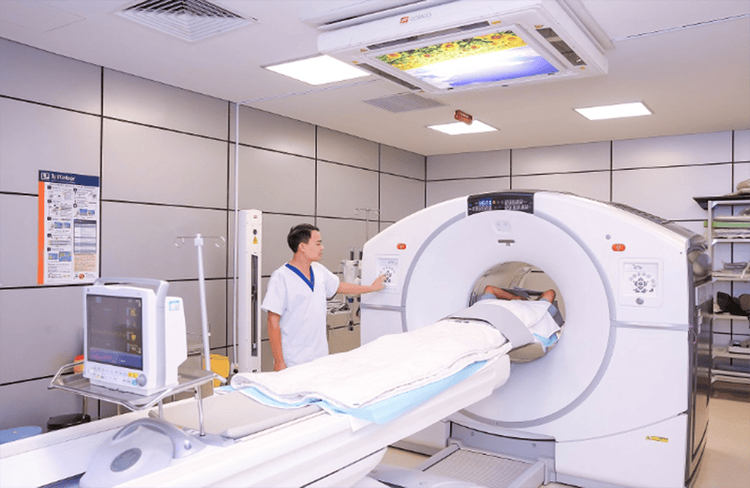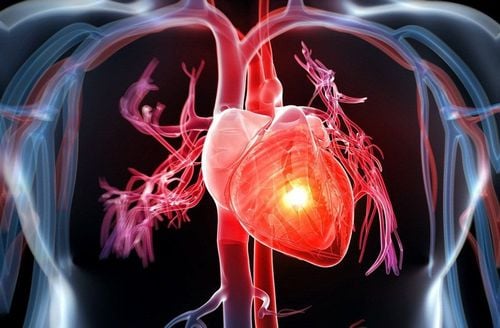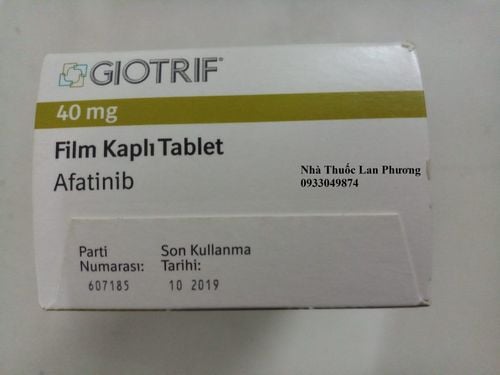This is an automatically translated article.
Lung carcinoid tumors are a rare type of lung cancer. Only 1% to 2% of lung cancers are carcinoid tumors and are usually slow growing. These are a type of neuroendocrine tumors, which means they start in special cells, called neuroendocrine cells, found in the lungs and throughout the body.
1. Classification of lung carcinoid tumors
Lung carcinoid tumor is a rare form of lung cancer. It's important to know what type of carcinoid tumor you have in order to get the best treatment. Lung carcinoid tumors are divided into two types: typical and atypical.
Typical pulmonary carcinoid tumors are the most common. About 9 out of 10 carcinoid tumors are called typical. They grow slowly and usually do not spread beyond the lungs. Atypical pulmonary carcinoid tumors grow faster, and they are more likely to spread or metastasize to other organs outside the lungs. Doctors also refer to lung carcinoid tumors based on their location. If the tumor is in the wall of the great airways of the lung, this is central lung carcinoid cancer. If they are found in the smaller airways near the edge of the lung, this is a peripheral lung carcinoid cancer.
The prognosis of lung carcinoid tumors is generally good. Among people with typical carcinoid tumors of the lung, about 85% to 90% live for 5 years or more, as well as 50% to 70% in those with atypical carcinoids.
MORE: What types of lung cancer are there?
Trắc nghiệm: Hiểu về phổi của bạn
Phổi là một tạng lớn rất quan trọng và không thể thiếu trong cơ thể. Việc giữ cho lá phổi của bạn luôn khỏe mạnh, tránh khỏi những bệnh phổ biến về phổi là điều bạn cần lưu ý để giúp cơ thể bạn có thể vận hành tốt. Hãy cùng chúng tôi trả lời nhanh những câu hỏi trắc nghiệm sau sẽ giúp bạn hiểu về phổi của bạn hơn.
Bài dịch từ: webmd.com
The following content is prepared under supervision of Thạc sĩ, Bác sĩ y khoa, Nguyễn Huy Nhật , Nội Hô hấp , Khoa Khám bệnh & Nội khoa - Bệnh viện Đa khoa Quốc tế Vinmec Đà Nẵng
2. Causes and risk factors of lung carcinoid tumors
Researchers don't really understand the cause of lung carcinoid tumors. They found that typical lung carcinoid tumors do not appear to be related to smoking habits, but atypical lung carcinoid tumors are found more frequently in smokers.
The risk of getting these rare tumors increases with the following features:
Age: Lung carcinoid tumors can appear at any age, but they most commonly occur in people between 45 and 55 age. Gender: Lung carcinoid tumors are more common in women than men. Race/ethnicity: Lung carcinoid tumors are more common in Caucasians than in other racial and ethnic groups. Family history: Your risk is higher if you have a family member with a lung carcinoid tumor. Multiple endocrine neoplasia type 1. This inherited syndrome increases the likelihood of lung carcinoid tumors, as well as tumors in the pancreas, pituitary, and parathyroid glands.

3. Clinical symptoms of lung carcinoid tumors
In fact, the sick person may not have any symptoms. About 25% of people with these tumors show no abnormalities. Your doctor may discover them by accident during a routine physical exam or checking for another health problem.
Lung carcinoid tumors can cause the following symptoms:
Cough, sometimes with blood Wheezing Chest pain Shortness of breath Sometimes lung carcinoid tumors cause a condition called carcinoid syndrome. It is caused by hormones secreted by the cells in the tumor. Symptoms may include flushing of the face and neck, diarrhea, rapid heart rate, and weight gain.
MORE: Targeted therapy in lung cancer
4. Diagnosis of lung carcinoid tumor
The doctor will gather information by asking questions about your medical history (including your family history) and doing a physical exam, listening to the chest sounds.
The following tests can help establish a diagnosis of a lung carcinoid tumor:
A chest X-ray can show if there is a tumor in your lungs. Some may be too small or in places that cannot be seen with standard X-rays. A chest CT scan uses X-rays and a computer to provide cross-sectional images of the lungs and can also show if any tumors have spread to organs other than the lungs, such as the liver. Blood and urine tests will find substances that carcinoid tumors sometimes secrete. Serotonin or chromogranin-A in the blood can be a sign of a typical carcinoid tumor. Levels of 5-HIAA, a by-product of serotonin, may appear in the urine of the patient. A biopsy is a tissue sample taken from the tumor and examined under a microscope. It can be done in two ways. If you have a nonsurgical biopsy, you will likely be sedated. The doctor may insert a bronchoscope, a thin, flexible camera, into the lungs to look at the tissue. If you have a surgical biopsy, you'll be under anesthesia and need to stay in the hospital, which will also take longer to recover. The doctor will have to operate with a small incision in the chest to take a tissue sample.

5. Stages of lung carcinoid tumors
Cancer is classified based on the size of the tumor and whether it has spread to nearby lymph nodes or other parts of the body. Knowing the stage of the disease helps the patient and the doctor to consider appropriate treatment options.
Stages from 0, earliest, to IV, heaviest. Doctors sometimes use letters along with stage numbers to break it down even further.
6. Lung carcinoid tumor treatment
Your doctor will advise you and help you understand the pros and cons of all treatment options and what might be best.
Surgery is usually the first choice, depending on how healthy the patient is, where the tumors are in the lung, whether they are typical or atypical, and what stage they are in.
Patients may also receive chemotherapy or radiation therapy, sometimes after surgery. If the tumor cannot be completely removed with surgery or has metastasized outside the lungs or has recurred, your doctor may recommend targeted therapy, a special type of chemotherapy. The FDA approved everolimus (Afinitor) for this method in 2016. Some drugs can ease symptoms caused by hormones secreted by tumors and may slow their growth.
Clinical trials may be an option if other treatments are not suitable. In clinical trials, researchers calculate the safety and effectiveness of new treatments. Doctors can help patients find a clinical trial they're eligible to participate in. Ensure that the patient is fully aware of the relevant information, including the risks, benefits and where you will be going for treatment before signing up.
Currently, Vinmec International General Hospital has been and continues to be fully equipped with modern diagnostic facilities such as: PET/CT, SPECT/CT, MRI, CT..., myelogram blood test, histopathology, immunohistochemistry, gene testing, molecular biology testing, biopsy testing,... as well as a full range of targeted drugs, the most advanced immunotherapy drugs in cancer treatment. Multimodal cancer treatment from surgery, radiation therapy, chemotherapy, hematopoietic stem cell transplantation, targeted therapy, immunotherapy in cancer treatment, new treatments such as autoimmunotherapy body, heat therapy...
After having an accurate diagnosis of the disease and stage, the patient will be consulted to choose the most appropriate and effective treatment methods. The treatment process is always closely coordinated with many specialties to bring the highest efficiency and comfort to the patient. After undergoing the treatment phase, the patient will also be monitored and re-examined to determine whether the cancer treatment is effective or not.

Besides, to improve service quality, Vinmec now also deploys an intensive lung cancer screening package made by leading specialists at home and abroad, which can be easily detected. factors that cause lung cancer since the onset of symptoms.
Please dial HOTLINE for more information or register for an appointment HERE. Download MyVinmec app to make appointments faster and to manage your bookings easily.
Reference source: webmd.com













